2020 Mercedes-Benz GLE450 vs. BMW X5 vs. Porsche Cayenne vs. Audi Q7
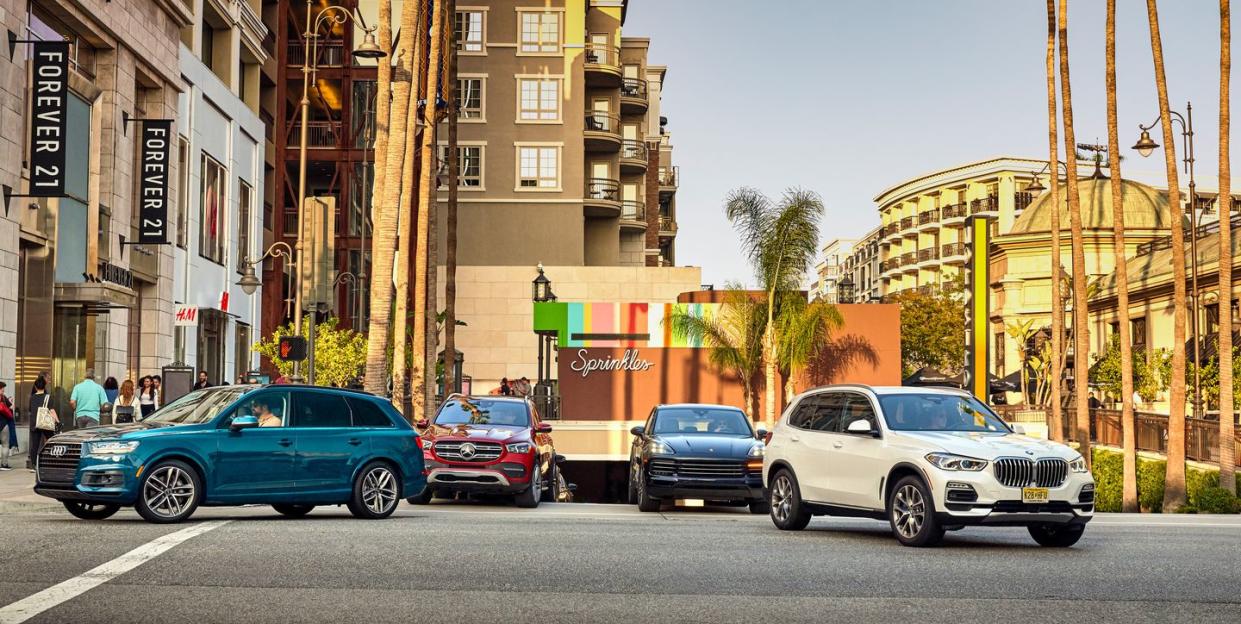
With SUVs of all sizes and types outselling Corona on Taco Tuesdays, it's easy to forget how relatively young so many of them are. When Mercedes launched the proto-GLE, the M-class, in 1997, SUVs were still mostly Ford Explorers and Jeep Grand Cherokees. The luxury class in particular was so infantile that the first M had a ladder frame. Twenty years later, there's been such baffling diversification of the SUV species that all four vehicles seen here now have "coupe" siblings that are mechanically identical but intentionally less practical. It's a style statement made into a, um, style statement.
Three of these style statements are new within the last year, and the fourth is a sitting 10Best winner. The latest M-class, now known as the GLE-class, grows longer and wider, with an additional 3.2 inches of wheelbase stretching rear-seat legroom. A third row of seating is also newly available. Ours lacked that option, but the GLE450 packs Mercedes's new 3.0-liter inline-six that makes 362 horsepower and 369 pound-feet of torque and features a 48-volt motor-generator that allows for greater flexibility in the fuel-saving stop-start system.
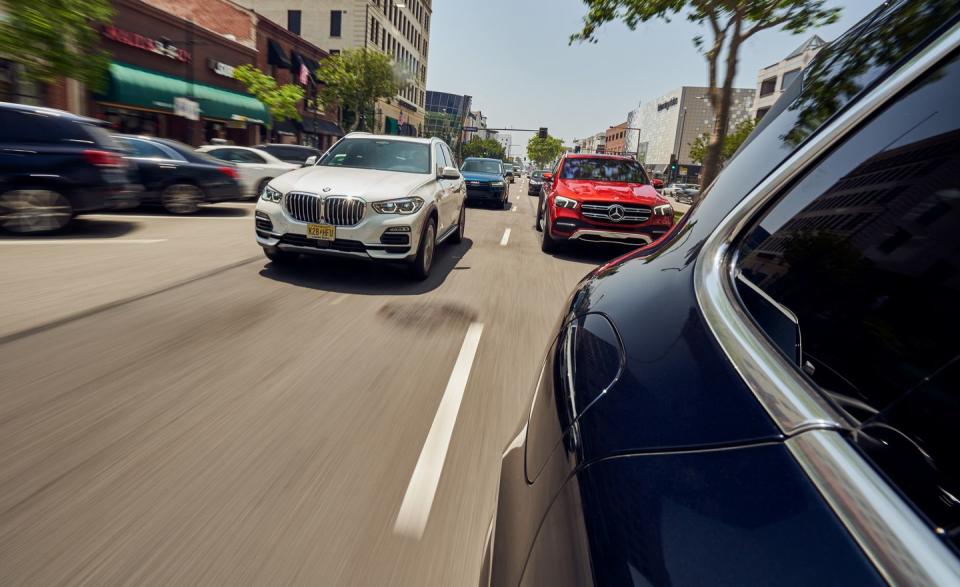
When the M-class rolled out 20 years ago, cross-state rival BMW was just a half-step behind with its first SUV, the X5. This time, BMW beat Mercedes to the punch, rolling out the latest-generation X5 three months before the GLE came out. Based—as is much of the BMW lineup, from the 3-series to the new three-row, seven-passenger X7 SUV—on Bavaria's yogi-flexible Cluster Architecture, the X5 also offers a third row, though the wayback's standard installation in the X7 makes big brother the choice for families with, well, more and bigger brothers. BMW's eight- and six-cylinder engines are updated for the new generation, with the six here whipping up 335 horsepower.
In the U.S., the increasingly diverse Volkswagen Group sells seven SUVs based on the MLB Evo platform, from the $44,000 Audi Q5 to the $300,000 Bentley Bentayga Mulliner. But the Porsche Cayenne is the bastard that paved the way for bastards like the Bentayga and Lamborghini Urus. Revised for 2019, it's a nearly two-and-a-half-ton truck with up to 541 horses from a brand that made its name on lightweight sports cars with engines so small and simple, they didn't need water cooling. The new gen amps up more than outputs, doubling down on the blasphemy with engines co-developed with Audi and a platform developed by the four-ringed brand. The MLB Evo stretches and shrinks as needed, with the Cayenne's wheelbase at the short end of the spectrum.

Our other MLB Evo entrant, the Audi Q7, stretches four inches longer than the Cayenne between the wheels. The model was the last to market of the vehicles gathered here, with sales starting for 2006, eight years after the Mercedes made its debut. But its current generation is the group elder, having gone on sale for 2016. It's also a Car and Driver favorite, occupying the segment's spot on our list of 10Best Trucks and SUVs and finding its way into one editor's garage. While the Porsche and other Audis move to a new turbocharged 3.0-liter V-6, the Q7 hangs on to its supercharged six for now. We'll miss it when it's gone.

When these things first appeared, SUVs were so inherently macho that the ML320 starred as the jungle cruiser in 1997's Jurassic Park. Today, they're still appearing in Jurassic movies, but they're commonly understood to be suited to mall cruising and nothing more. Well, maybe a little bit more. After preening around Glendale, California, for photos, we headed into the hills north of Pasadena to wreak a little havoc. Snoochie boochies.
4th Place:
Mercedes-Benz GLE450
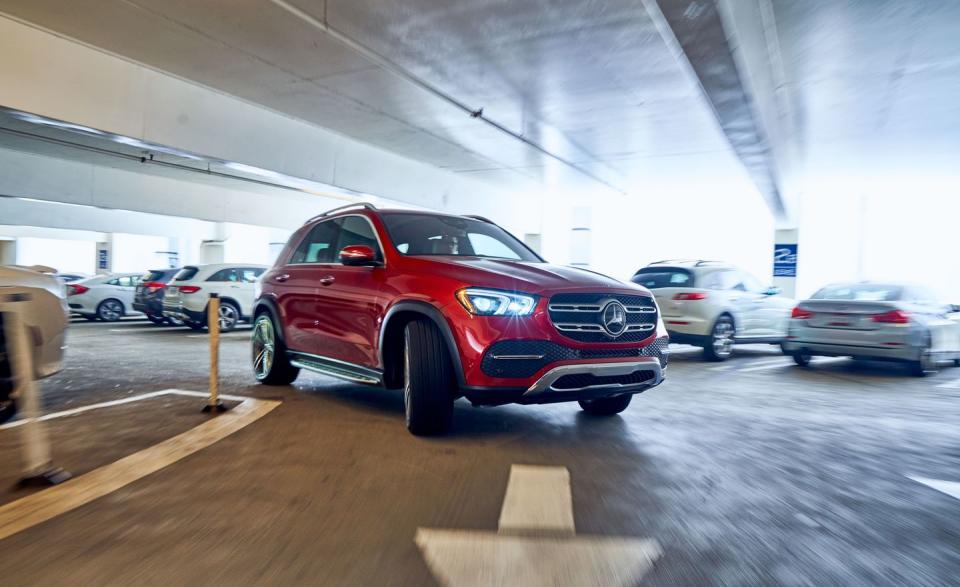
Highs: Macho on the outside, opulent on the inside.
Lows: Never a dynamic standout, pricey, infuriating infotainment system.
Verdict: Okay, lunchbox. Let's try this again.
The Mercedes's fourth-place finish isn't even as close as it looks. Its $575 trailer hitch gave it a five-point bump over the rest—all of which can tow more than 7000 pounds when properly equipped. For less than $700, any of its three competitors could have closed that gap.
We wanted to like the Benz, and we do. Its stately shape, muscular flared fenders, and huge rubber give it an awesome stance. And it looks great inside, too. Mercedes assembles rich materials into handsome designs, creating a luxurious environment few others match.
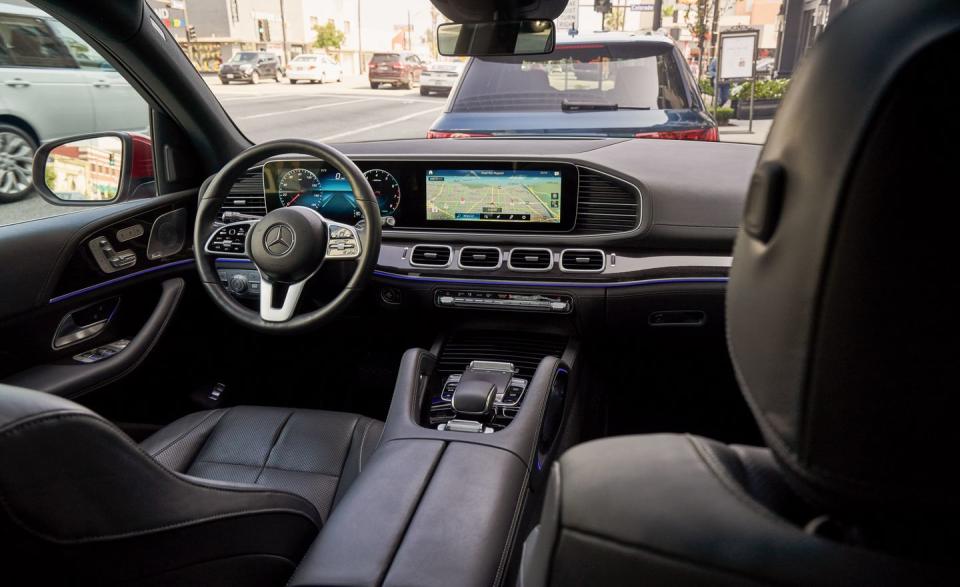
But these days, ergonomics is often a measure of how infuriating and baffling an infotainment system is, and the GLE's is both. A touchpad is such an asinine way to control an in-vehicle computer system as to be criminal. There are even tiny, sub-Chiclet-sized touchpads for your thumbs on the steering-wheel spokes. The COMAND system used to be one of our favorites; even if you can bypass the new touchpad with the touchscreen, this change is as disappointing as the moment you find out the Easter Bunny is just a guy in a suit. Further complicating the system are its busy graphics and the distracting flood of displays, gauges, and readouts. It's a good thing an alarm sounds and a warning flashes to alert the driver he's about to crash, because this system is the reason.
While our initial impression of the GLE driving experience was favorable, it fell further down our list with each competitor we drove and each new environment we experienced it in. There's very little communication through any component. The Mercedes and Porsche form the big-tire club here, both packing 315s in their rear fenders, but the Cayenne manages far more with its Pirelli P Zeros than the GLE does with its all-season Michelin Primacy Tours. Even compared with the other all-season tires in the test, the front Michelins give up earlier. The GLE feels as if it could use 315s on the front axle, too. And while the body stays nice and level under aggressive cornering, the driver is aware of an awful lot of wheel and tire movement. On a hard mountain run, the Mercedes was the only vehicle to experience brake fade, and it heated its engine oil to nearly boiling.
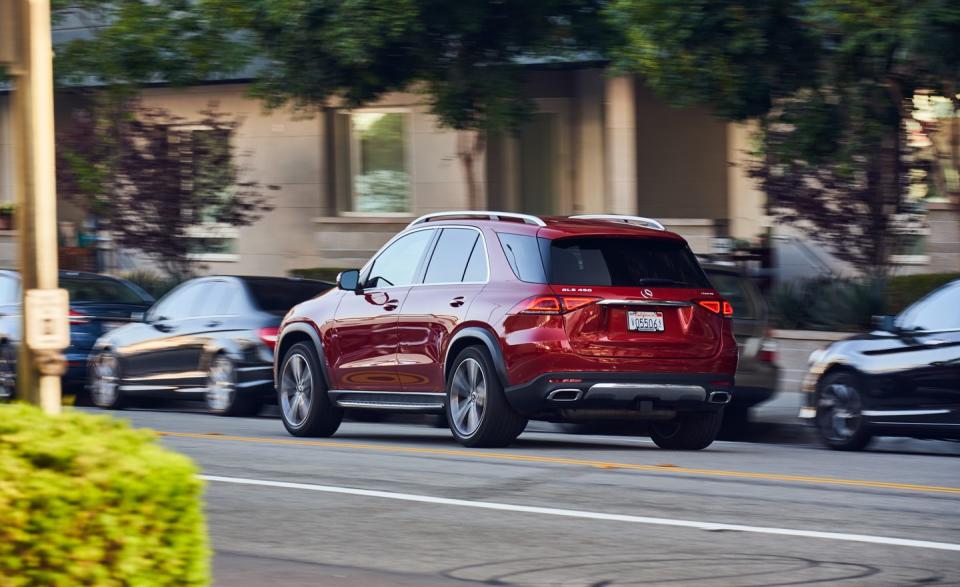
New on this generation of the GLE is the E-Active Body Control suspension that can lean into corners, which might have improved the Benz's ride but would have heaped another $8100 on to the tab. As it was, the Mercedes cost more than any other vehicle in this test, and that was without notably more equipment than the Audi or the BMW.
The Mercedes's straight-six is powerful and smooth, but BMW's 3.0-liter is a testament to consistency and continuous improvement. In contrast to the Bimmer's mill, the Benz's inline-six still feels about the same as the old V-6. Neither it nor the rest of the GLE likes to have any fun.
3rd Place:
Audi Q7
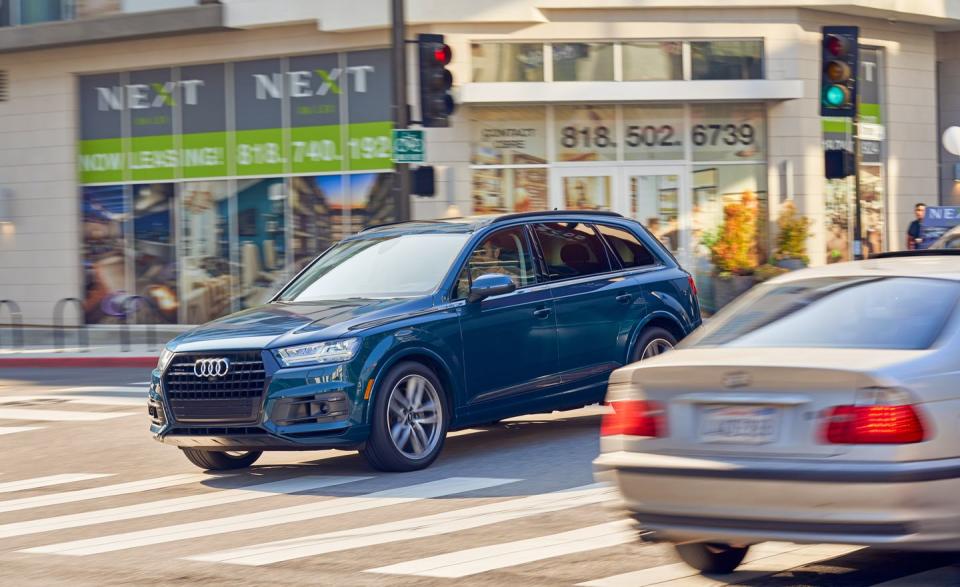
Highs: The king of content, the admiral of accommodations, bad at nothing.
Lows: Incredible bulk, underwhelming power, starting to look dated.
Verdict: Being broadly competent is not as enticing as being outstanding at one thing.
The Q7 keeps landing on our 10Best list because there's nothing it isn't good at. It landed in third place because there's nothing it is the best at, either. It's a comfortable cruiser, but it's no BMW X5. And it's a competent handler, but it's no Porsche Cayenne. If you had to pick one from this group to be your only vehicle, the Audi would rarely disappoint. But what buyer of an $80,000 SUV has just one vehicle to do everything?
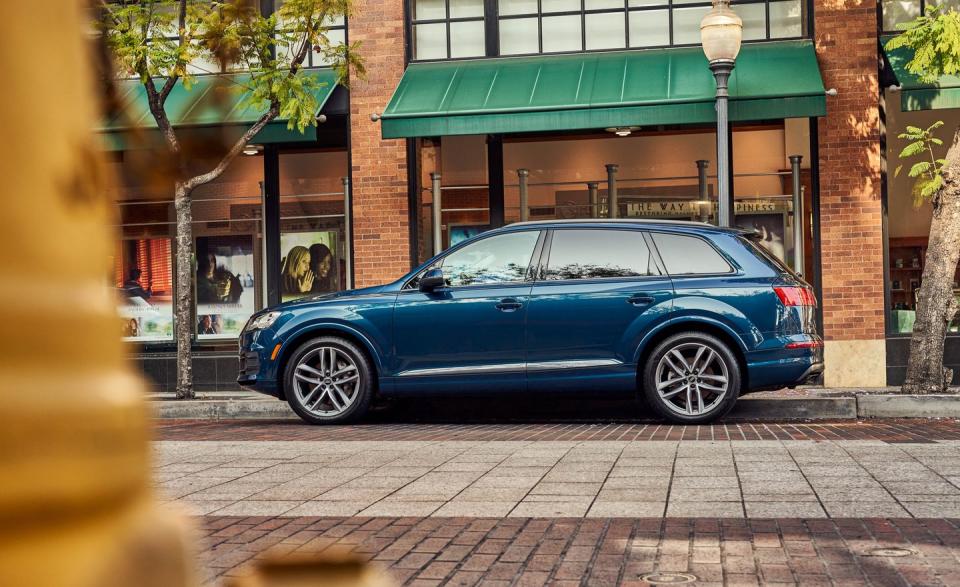
The Q7 is easy and satisfying to drive fast or slow. It's not fun like the Cayenne, but neither is it incompetent. While slightly rubbery, its steering is more organic than the BMW's or Mercedes's, and aside from the X5's, it's the most neutral. But there's more body roll than in the Porsche, and the stability control stays busy, intervening with a heavy hand when the Audi is pushed. There's an inch or so of dead space at the top of the brake pedal's travel, but below that, it's firm and progressive.
In a field of turbocharged sixes, Audi's supercharged six is a unique character. Too bad it's being phased out in favor of yet another turbocharged V-6. While output is nearly identical to the Porsche's turbo 3.0-liter—the engine that is taking all the supercharged six's jerbs—the Audi is 400 pounds heavier, and its transmission isn't as quick or smooth, meaning it's the slowest in the pack. We appreciated the opportunity to listen to the sonorous six for longer stretches without hitting felonious speeds, but . . . who are we kidding? We want it to be quicker. It's the slowest one here by a long shot.
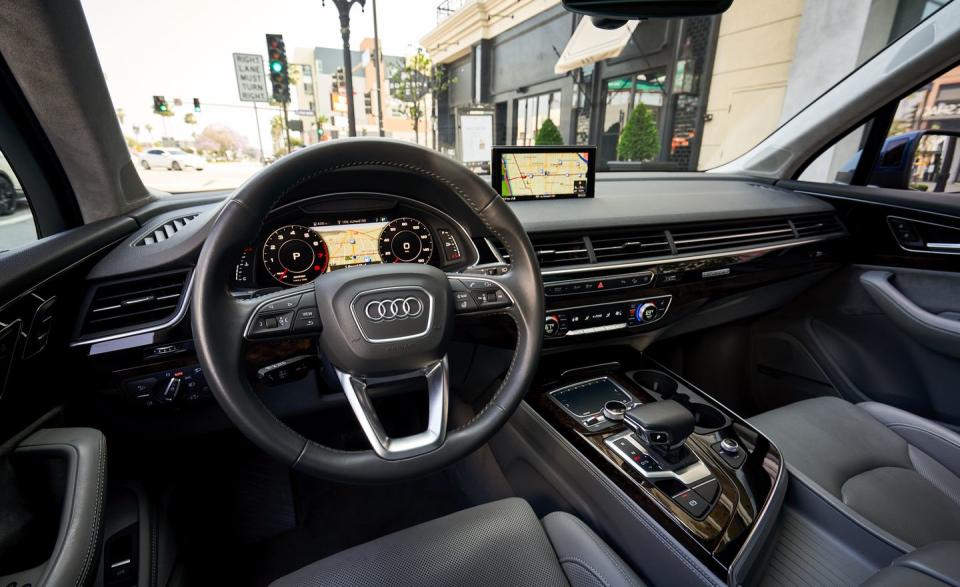
And you'll enjoy being inside the Q7. Its cockpit is refreshingly unobtrusive. A gap between the base of the center stack and flat center console emphasizes the airy feeling of the front row. There's plenty of room in the back seat of this Volkswagen Group product, too, the Q7 scoring the highest in the test for comfort, even though it's the only SUV here with a third row in reserve. The second row slides fore and aft to optimize space for a small family or compromise with a larger one aboard.
In one of several shifts in the segment leaderboard, the Audi's aging interior design now feels underwhelming. The brand has prioritized design inside and out for so long that we were surprised by how much more realized the BMW and Benz interiors feel. In comparison, the Q7's conservatism comes across as a lack of inspiration—or maybe commitment. Although, at the pace this segment is evolving, we're sure that will change with the old-man Audi's next facelift in a year or two.
There's nothing so fundamentally wrong with the Q7 that it needs much more than a mid-cycle refresh to fix. The Audi serves up satisfaction, but if you're looking to fall in love, consider one of our next two suitors.
2nd Place:
BMW X5
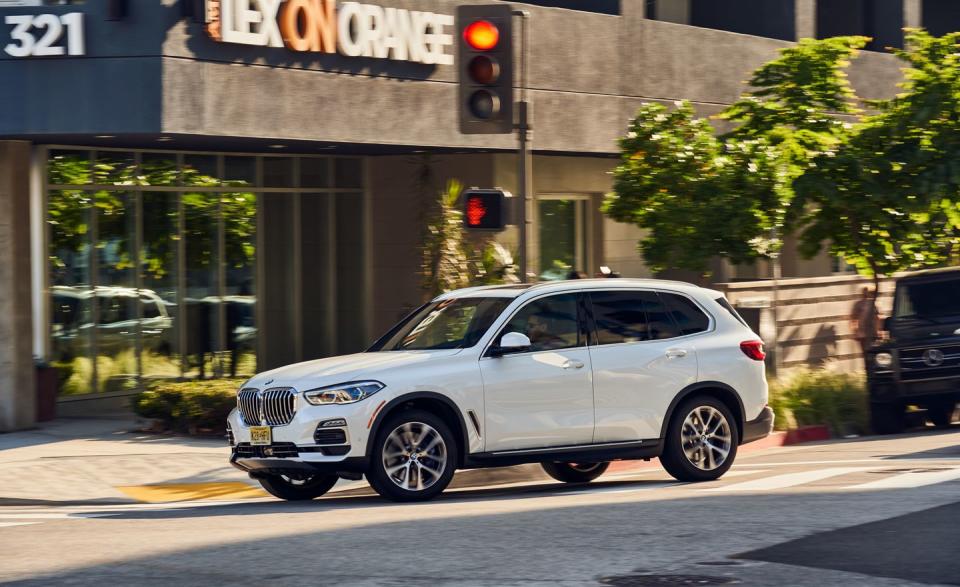
Highs: Faster than Walt Flanagan's dog, one of BMW's best interior designs.
Lows: Handles kind of like a BMW without feeling like it does.
Verdict: An excellent product, no matter how unexpected.
It's hard to decide what to think of the X5, because it's hard to decide what it represents. Is this BMW losing its way, or is this just BMW setting aside its pride and giving customers what they want? An SUV needn't be a sporty vehicle—and the X5 isn't.
And yet, it's hard not to like the X5. The goodwill starts brimming as soon as you climb aboard. Without feeling like barstools, the seats are up high and provide an expansive view all around. It feels as if there's way more glass area here than in the others, which you wouldn't think just by looking at the X5's exterior. Rotating into the BMW from any other vehicle, the effect is truly jarring, and it primed our brains to view the rest of the experience favorably.
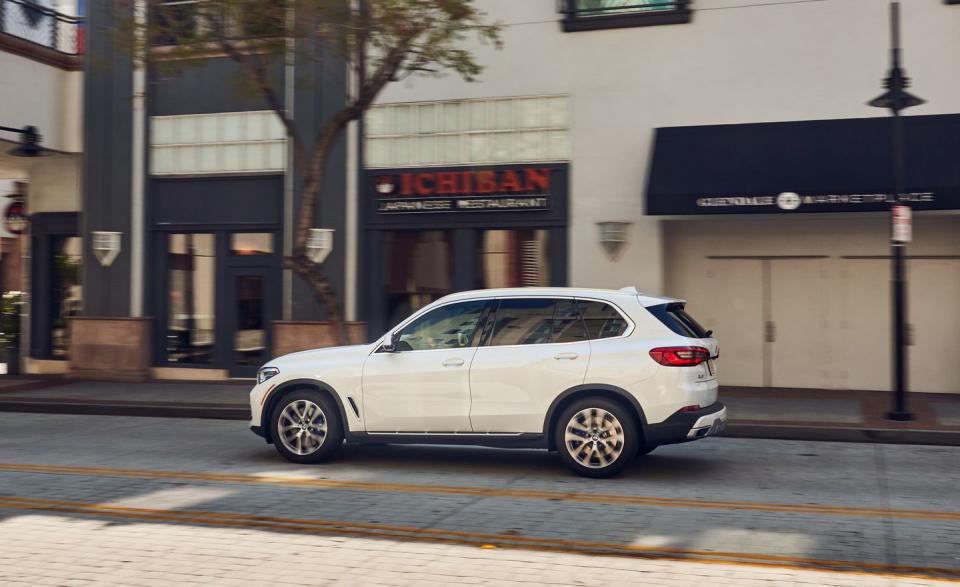
Proof: The X5 is uncharacteristically cushy and isolated. As print director Tony Quiroga noted, switch from Comfort to Sport and "steering feel goes from nonexistent to meh." But on the highway, there's a fluidity and supreme calm about the X5 that is very alluring. On winding roads, the BMW leans nauseatingly, but even then, the suspension absorbs big jolts with a single well-damped cycle. And although it gets discombobulated in rapid transitions, the X5 manages its relatively light mass with the narrowest tires, gripping the skidpad at 0.88 g. Its neutrality while doing so—enabled, naturally, by its 50.0/50.0 front/rear weight distribution—is the most BMW-like aspect of the X5's handling.
Its turbocharged 3.0-liter straight-six, on the other hand, is the most BMW-ish element of the vehicle overall. It's a model of smoothness and immediacy, propelling the X5 to the test's quickest acceleration times. And, as opposed to this engine's installation in some BMW coupes and sedans, where it's so isolated that the vehicle seems to be propelled by a soulless electric motor, there's just enough grit here to celebrate internal combustion.
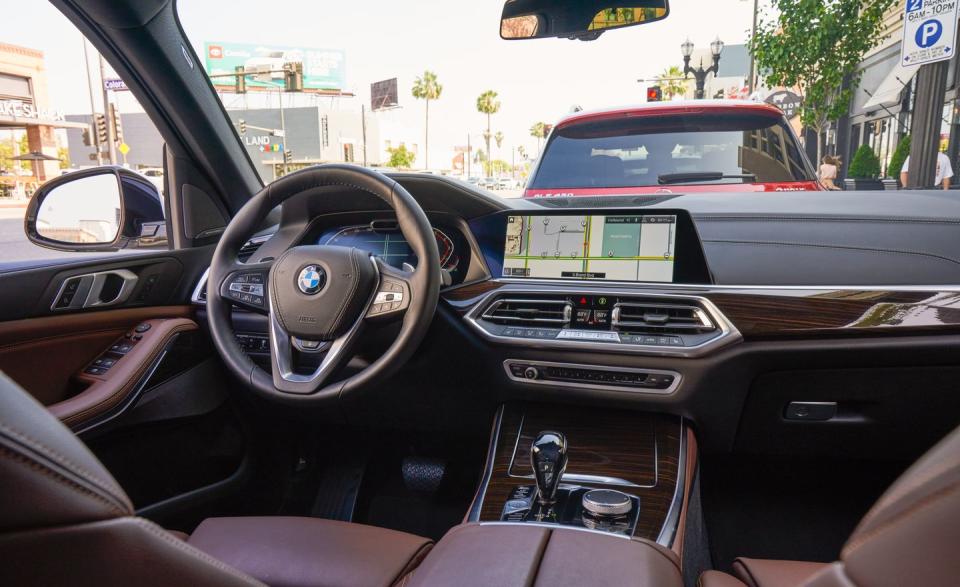
If the balance and the engine are the most BMW-like aspects of the X5, its staggering value proposition is certainly the least BMW thing about it. The Audi, BMW, and Mercedes are all so packed with features that the differences are mostly in USB-port count and the pile depth of the rear-seat floor mats. Yet the X5 comes in $7000 lower than the Audi, $11,000 cheaper than the Benz. It's wrapped in a rich interior with materials and design that are cool and classic yet modern.
What we have here is a BMW that doesn't feel like any BMW we've ever appreciated before but one that we respect, perhaps a bit begrudgingly. But you know what we like even more than that? A Porsche that feels the way a Porsche should.
1st Place:
Porsche Cayenne
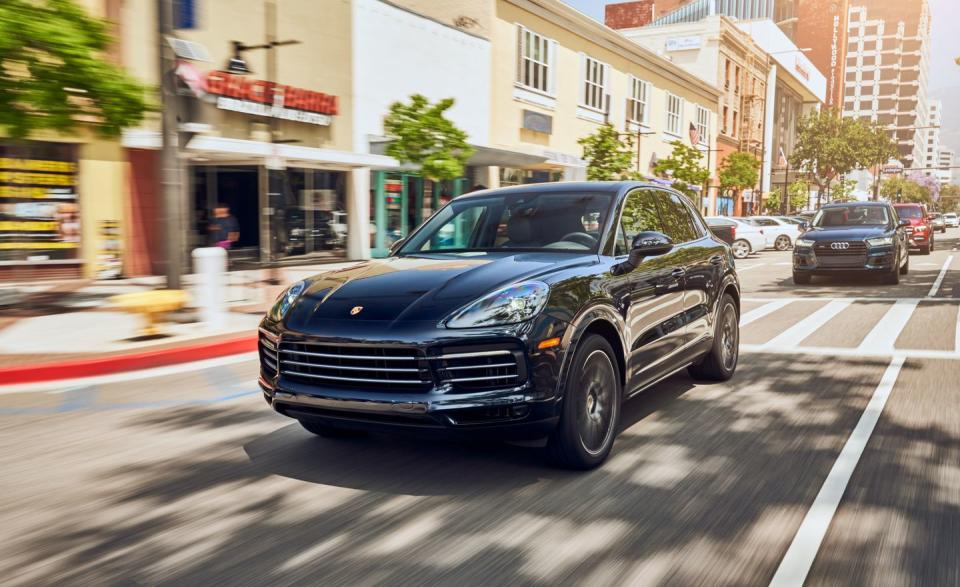
Highs: Power hits like a sockful of quarters, the uncontested handling champion.
Lows: Good luck finding this much plastic inside the BMW or Mercedes.
Verdict: The VW Group does well-rounded well and Porsche does it best.
There are some things you just don't talk about in public. Like how virtually zero buyers in this segment are ever going to push any of these vehicles to the point that they realize just how wobbly the X5 gets in limit transitions. We will admit that we got a little carried away, because the evidence is damning: Our observed fuel economy was barely half the vehicles' EPA ratings. But not only does the Cayenne make it easy to drive an SUV as though it's a sports car, it makes it fun. Real fun. And it does so with enough competence that its driver has mental bandwidth to spare for laughing at the BMW teetering in his rear view.
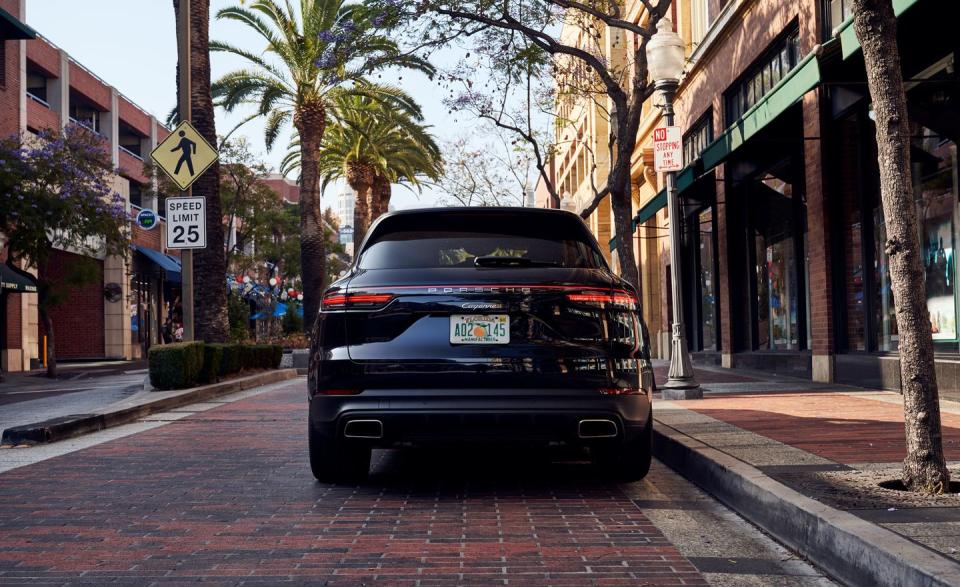
This bit of supernatural chicanery starts with the test's lightest vehicle by more than 200 pounds—the advantage over the heaviest-in-test Mercedes is nearly double that. Porsche's Normal suspension setting is more controlled and competent than the Benz is in Sport, with a one-and-done acknowledgment of surface disruptions that keeps the driver informed but not disturbed. And then Porsche has Sport and Sport Plus modes above that, which cinch tighter the suspenders without adding harshness. Taken as a survey on ride-handling balance, the quartet of vehicles here suggests that it is easier to take a car that already handles well and teach it to ride comfortably than to make a vehicle with a comfortable ride handle well.
Then there's the Cayenne's steering wheel, a little smaller in diameter than the three others and controlling a system that is so much more responsive and direct than anything else in this comparison test. When we first cycled into the Porsche from the other SUVs, we felt like bad drivers through the first couple turns until we could recalibrate.
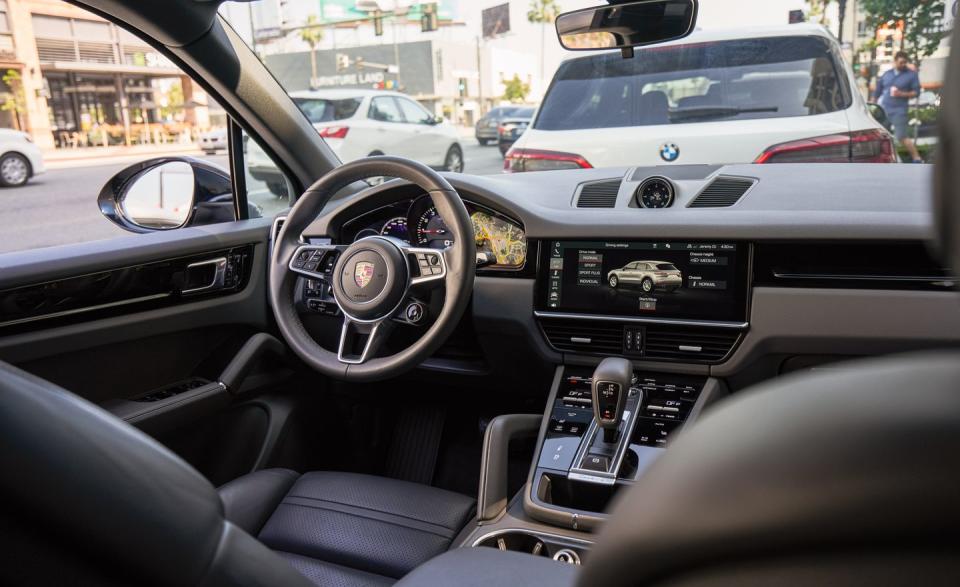
It's not all Cinnabons and chocolate-covered pretzels, though. The Porsche's turbocharged 3.0-liter V-6 gets gritty enough at high rpm to buzz a phone left in the cupholder. We kept thinking—hoping?—it was new Bumble matches, but we got suspicious when it happened only above 5000 rpm. And while the Cayenne's interior would look okay in a base Boxster, Porsche could use some help figuring out what the interior of an $80,000 vehicle ought to look like. As Quiroga noted, "The interior plastics are first rate, but the others all have leather wrappings." The big slab of rubbery plastic that makes up the Porsche's dashboard is particularly conspicuous, and the door handles, window sills, and grab handles are molded from the same material.
But there are interior highlights. The Cayenne's haptic-feedback center console, with its smartphone-smooth black surface punctuated by crisp little graphics, imparts a clean, technical look. And the five-gauge instrument cluster with a real analog tachometer in the center sets an appropriately sporty tone for the rest of the vehicle.
While the BMW satisfies completely when driven the way that most buyers will treat their luxury SUVs, the Porsche Cayenne wins because it satisfies under that and all other conditions as well. It's another win for this brand of highly reputable mischief makers. Snoogins.
From the August 2019 issue.
You Might Also Like

